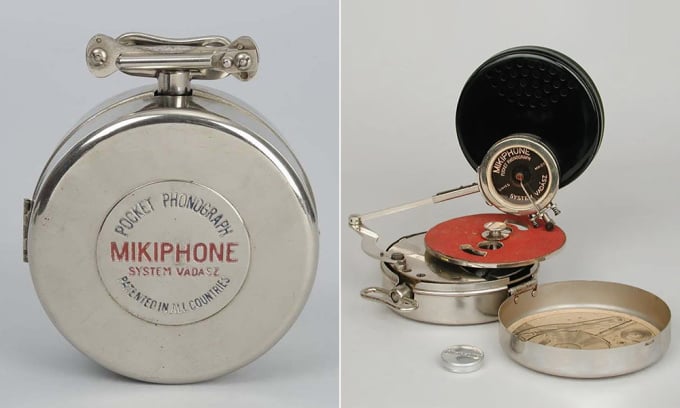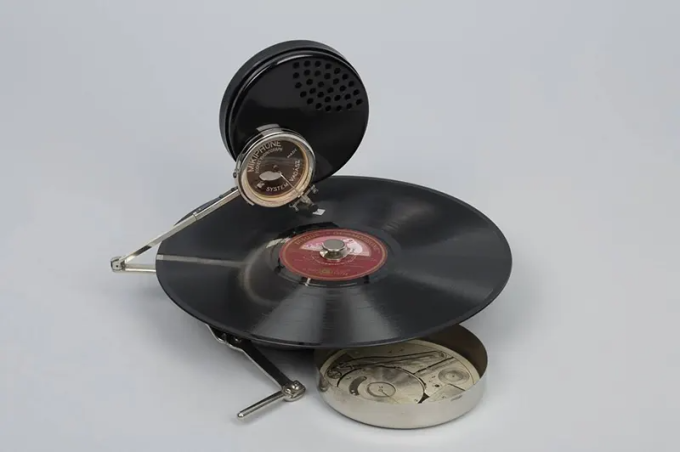The compact Mikiphone pocket record player with a diameter of 11.5 cm and a thickness of 4.7 cm was born about 100 years ago and operates without batteries.

Mikiphone pocket record player. Photo: Rare Historical Photos
In the 1920s, long before modern gadgets took over our daily lives, a handy little invention literally put music in our pockets. This impressively old invention was the Mikiphone, a pocket-sized phonograph that allowed listeners to carry their favorite tunes with them on the go.
The Mikiphone was the brainchild of Hungarian brothers Miklós and Étienne Vadász. It was put into mass production under a licensing agreement with Maison Paillard, a company based in Saint Croix, Switzerland. Maison Paillard originated from a group of local clockmakers who came together in 1814, initially specializing in making music boxes.
Towards the end of the 19th century, the company expanded its product range to include cylinder phonographs and switched entirely to phonographs in 1905. Notably, in 1913, Maison Paillard introduced an AC phonograph motor. From 1927 onwards, the company expanded its product range, manufacturing electric amplifiers for phonographs and later radio equipment.
During these milestones, Maison Paillard produced around 180,000 of the Vadász brothers’ Mikiphones. Unlike many musical devices today, the Mikiphone operates without batteries, relying on a hand crank for power. Its sound is amplified through a resonator.

Mikiphone working with a record. Photo: Rare Historical Photos
The closed Mikiphone is quite compact, easily fitting into a pocket, measuring 11.5 cm in diameter and 4.7 cm thick. The phonograph components are contained in a case and require some assembly before use. The record head and Bakelite resonator must be connected to the arm (support arm) before placing the shellac disc on the turntable's center pin.
When fully assembled, the Mikiphone took up a considerable amount of space. The pocket-sized phonograph was primarily designed to play 25cm records, making it more of a party entertainment device than a portable everyday companion. Still, the Mikiphone was a technical achievement of its time, and was awarded first prize at an international music exhibition in Geneva in 1927.
Thu Thao (According to Rare Historical Photos )
Source link




![[Photo] Vietnamese shipbuilding with the aspiration to reach out to the ocean](https://vphoto.vietnam.vn/thumb/1200x675/vietnam/resource/IMAGE/2025/5/20/24ecf0ba837b4c2a8b73853b45e40aa7)

![[Photo] Award ceremony for works on studying and following President Ho Chi Minh](https://vphoto.vietnam.vn/thumb/1200x675/vietnam/resource/IMAGE/2025/5/20/a08ce9374fa544c292cca22d4424e6c0)
























































































![[VIDEO] - Enhancing the value of Quang Nam OCOP products through trade connections](https://vphoto.vietnam.vn/thumb/402x226/vietnam/resource/IMAGE/2025/5/17/5be5b5fff1f14914986fad159097a677)
Comment (0)